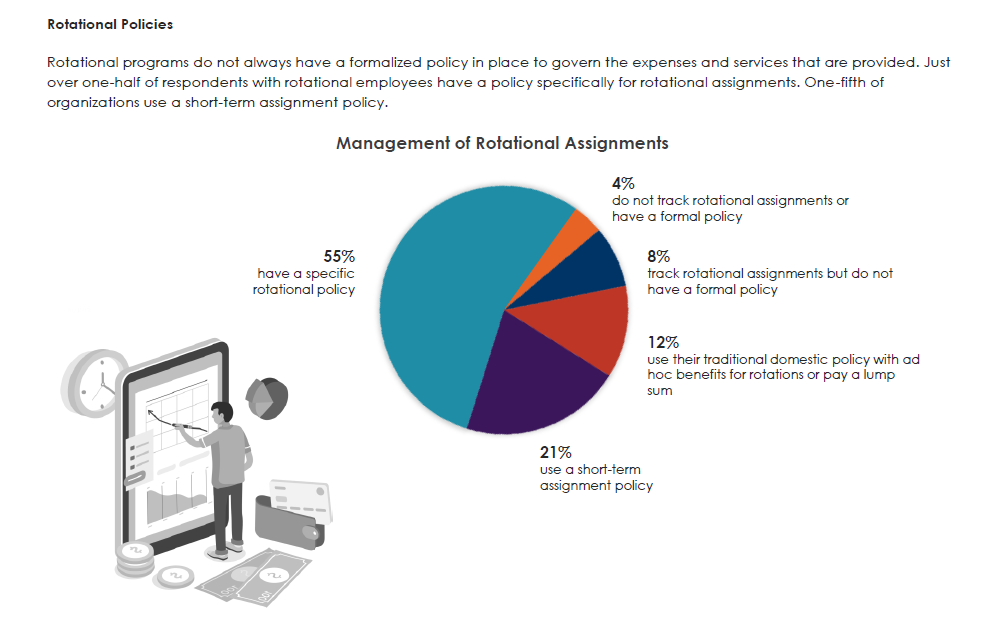Domestic Rotational Assignments
There has been considerable focus placed on rotational assignments over the past few
years. Organizations’ growing and changing talent needs, contract work, and
developmental programs have led to more demand for policies to support rotational
assignments.
So what is a rotational program? A rotational program is intended to assign an employee
to a location for a designated period of time to perform their job responsibilities. After
that ends, they rotate to a new location, and so on. At some point, the rotations end,
and the employee either returns back to where they started or settles in a new location.
The Aires Pulse Survey Domestic Rotational Assignments examines who these rotational
employees are, how and why they are rotating, and what types of expenses employers
are paying on their behalf. The contents of this report are based on information provided
by 42 different organizations with domestic rotational activity.
The survey asked what types of employees are being sent on rotational assignments. The
answers included all types of employees ranging from graduates and new hires to
executives. In all, there were 29 different types of employees named by the different
respondents.
The most common type of employee on rotation is an engineer, cited by at least one out
of every three respondents. There were several different types of engineers noted, such
as chemical, software, applications, test, and field.
The next most common type of employee on rotation is one in a leadership
development program, cited by at least one out of every six respondents. Managers and
Finance employees tied for the next most common types, each cited by one out of
every eight respondents.
Below is a sneak peek of the Domestic Rotational Assignments.

